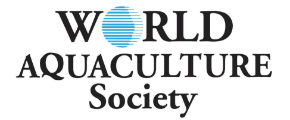FISH DISEASE IN HONG KONG AQUACULTURE
The aquaculture industry in Hong Kong mainly involves grow-out culture of marine (e.g. grouper and pompano) and freshwater (e.g. jade perch, grey mullet and tilapia) fishes using cages and ponds, respectively. The majority of fish farms employ traditional husbandry practices with high stocking densities. Under such circumstance, implementation of good biosecurity measures can be challenging. The Agriculture, Fisheries and Conservation Department has started to study on fish diseases since 1994. The department provides technical advice and assistance to local fish farmers on fish disease diagnosis, prevention and control.
For freshwater fish culture, disease outbreaks are usually related to inadequate water exchange, high stocking density and seasonal influence. Common pathogens include Aeromonas spp., Streptococcus spp. Trichodina spp., Centrocestus spp., and Ichthyophthirius multifiliis. For marine fish culture, Dactylogyrus spp., Cryptocaryon irritans and Trichodina spp. seriously affected the fry and fingerling of most species during the early stages of their introduction to floating net-cages. Secondary bacterial infections with Vibrio spp. are not uncommon. Megalocytivirus (RSIV and ISKNV) and Viral Nervous Necrosis Virus (VNN) were observed in both marine and freshwater fishes. Saprolegniasis caused by Saprolegnia spp. was the only fungal disease observed. Non-infectious diseases (fatty liver disease, gas bubble disease and swim bladder stress syndrome) also reported occasionally.
To serve the Hong Kong aquaculture industry better, an active Fish Health Inspection (FHI) surveillance was implemented by the department with three objectives: (1) to facilitate early detection of fish diseases and outbreaks on local fish farms; (2) to identify potential latent or emerging clinical infections; and (3) to implement the primary health strategies for controlling the spread of fish disease and minimizing fish loss.
In order to provide technical advice, recommended treatment and preventive measure at an early stage to minimize the spread of disease, the department is equipped with Vitek System, bacterial identification by Matrix Assisted Laser Desorption Ionization Time of Flight (MALDI TOP) and viral screening by pocket PCR kits (IQ PLUS) with a view to shorten the laboratory turnover time as far as possible.










